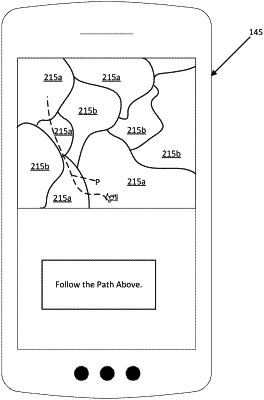| CPC G01C 21/3841 (2020.08) [B60W 40/06 (2013.01); B63B 49/00 (2013.01); B63B 79/15 (2020.01); G01C 21/3461 (2013.01); G01C 21/3626 (2013.01); G01C 21/3815 (2020.08); G06N 3/08 (2013.01); B60W 2555/20 (2020.02); B60W 2556/50 (2020.02); G01B 15/02 (2013.01); G01J 2005/0077 (2013.01)] | 20 Claims |

|
1. A system, comprising a computer including a processor and a memory, the memory storing instructions executable by the processor programmed to:
upon determining a mobile object is approaching an ice layer above a body of water, obtain a thermal image of the ice layer;
input the thermal image and ambient temperature data to a neural network that outputs a plurality of regions of the ice layer and respective estimated thicknesses for the regions;
determine a classification for each region based on its estimated thickness and the mobile object, wherein the classification is one of preferred or nonpreferred;
predict a future time at which the classification for one region will transition between preferred and nonpreferred based on a characteristic of the mobile object and predicted ambient temperature data; and
output the classifications for the regions.
|